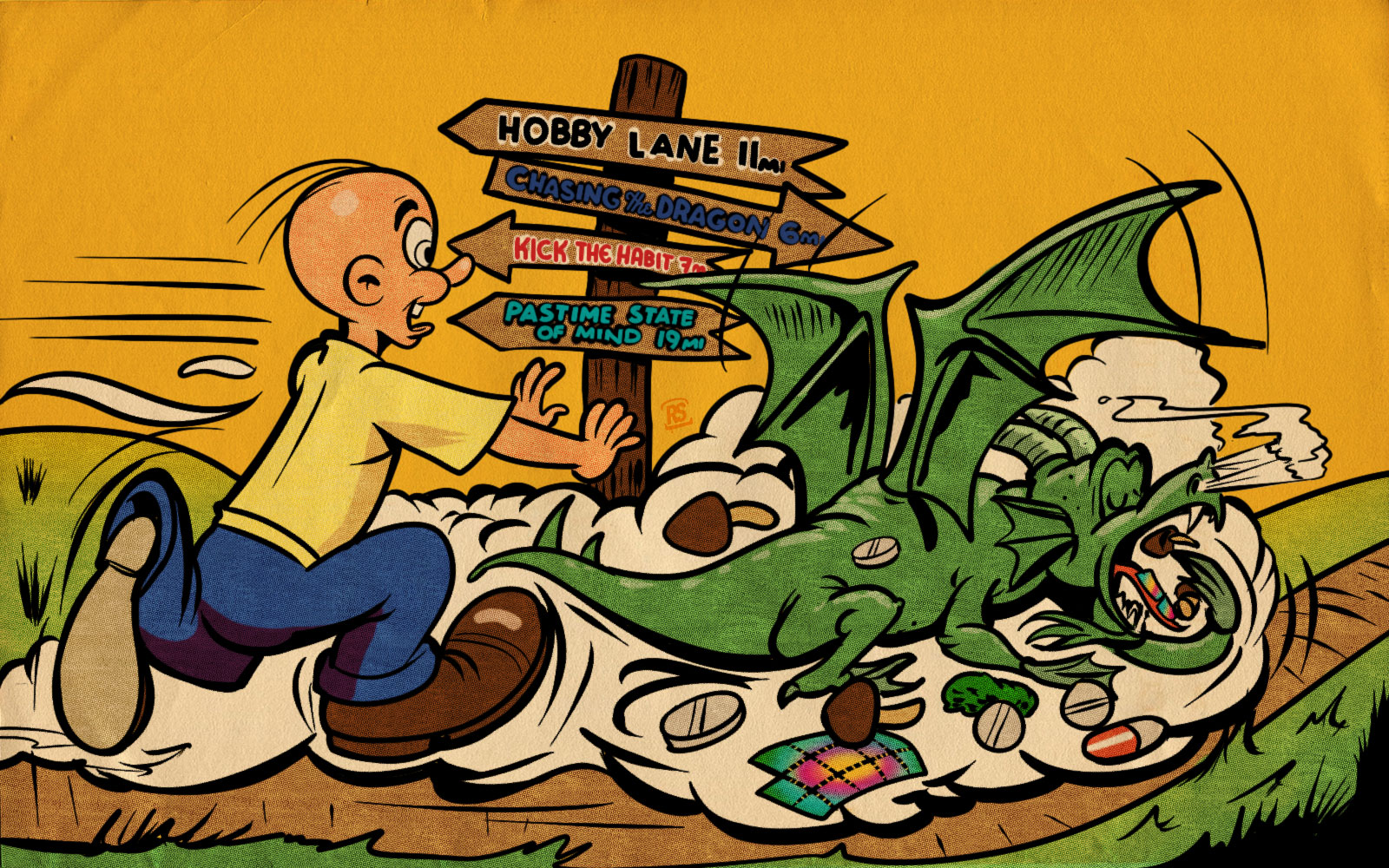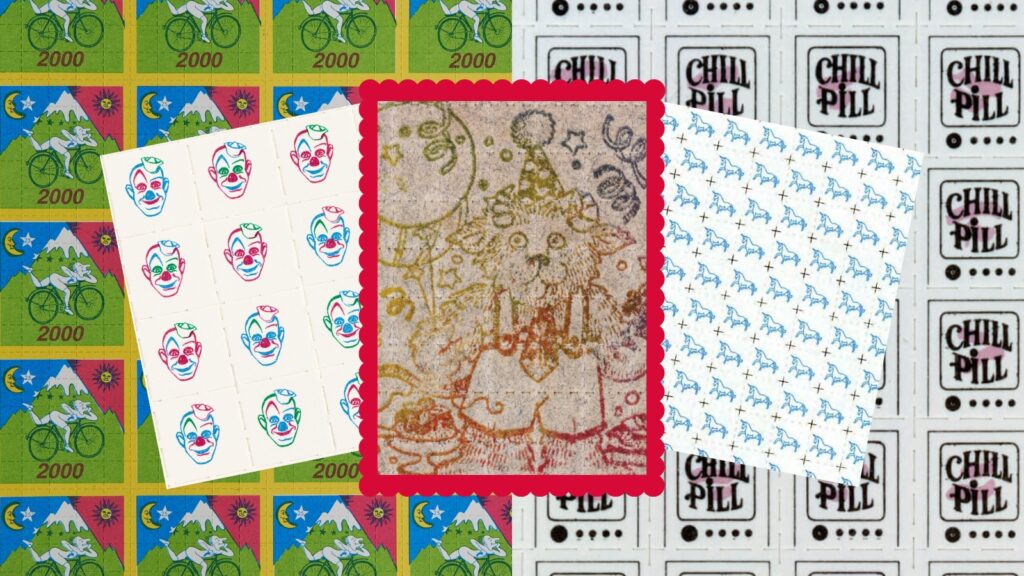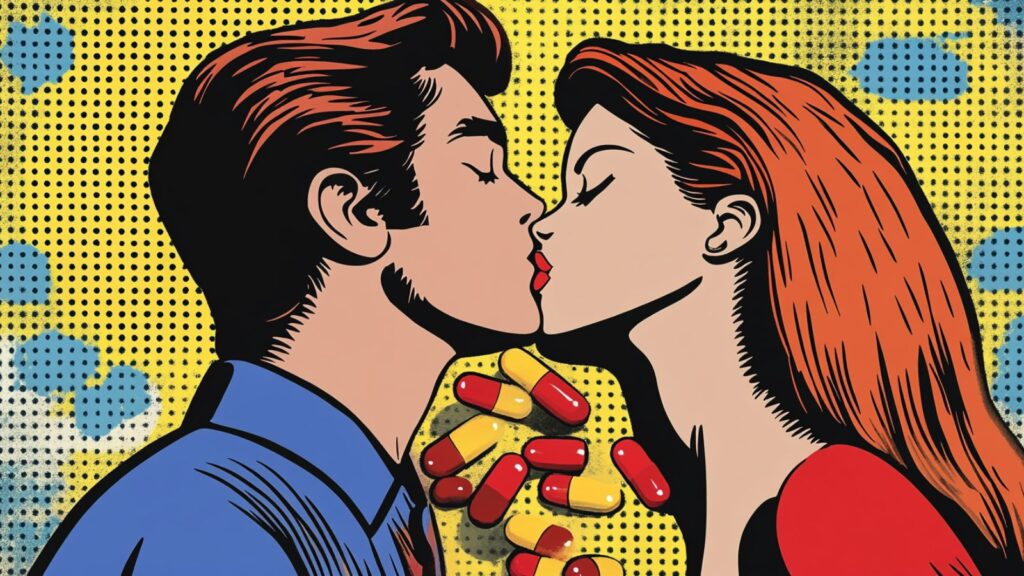Using mind-altering substances can be a fine line between beneficial and detrimental experiences. Drug use is complex and multifaceted. It’s a personal choice that should be kept in check. Altering consciousness can be incredibly enjoyable, but all too often can be taken too far. It’s crucial to check in regularly with yourself and friends when using substances and to know the signs when partaking is no longer done in a safe way, but instead “chasing the dragon” into a dark hole.
What Does Chasing the Dragon Mean?
Chasing the dragon is a slang phrase coined in reference to inhaling opiates, but the root of the meaning is desperately chasing an unattainable feeling. Opiates are notorious for providing a first-use euphoria that is never again attainable. This is true for many other substances as well and is a desire that should be recognized immediately. Chasing that feeling is a good sign that there is likely a drug habit developing.
So many substances are clumped into the same label of drugs. Many experienced users or part-time dabblers may have their own mental list of what they consider good drugs vs. bad drugs. But oftentimes the items on these lists differ from person to person. So what can we safely consider good drugs to be? And furthermore, how do we use them responsibly on a recreational or spiritual level, without concern for addiction?
Anything extremely habit-forming should be used with caution. Unfortunately, this doesn’t put anything in the clear because habits can be formed on a variety of foundations. An individual’s personality can also play a huge role in developing a drug habit. Moderation, self-reflection and honestly are the key players in responsible drug use.
Origins of Chasing the Dragon
As mentioned above, chasing the dragon is a phrase coined from the inhalation of opiate substances, like black tar heroin and opium. The first heroin smoking originated in Shanghai in the 1920s. Porcelain bowls and bamboo tubes were used. Over the next decade, the act of chasing the dragon soon spread throughout Eastern Asia and to the United States.
Signs of Substance Abuse
Signs of substance abuse can affect a person both physically and mentally. A drug habit should be taken seriously. Change in mindset or frequent use can quickly turn a tool used for spiritual expansion or recreational release into a problem that can threaten health, mental well being and, in some cases, life in general. Never take substances when feeling emotionally unstable or in a dark headspace.
Signs of addiction can be hard to identify in others as well as in ourselves. Often when succumbing to a drug habit an individual is not fully present and therefore self-awareness is crippled by the substance or the mental space that has led to the drug habit. Because of this, it can be difficult to acknowledge and overcome addiction without help.
Early Behavioral Signs
A simplified list of early behavioral signs includes:
- Constant thoughts about the substance:
- How much do I have left? Where can I get more? When can I get more?
- Mood swings revolving around before and after using the substance.
- Regularly prioritizing purchasing the substance over other life necessities.
- Overspending on the substance/going through extremes to acquire it.
- Seeking a no longer attainable high (Chasing the Dragon), needing to increase dosage for effect due to heightened tolerance from overuse.
- Symptoms of withdrawal: feeling anxious, jumpy, sick, chills, hot flashes, dizzy or shaky are some of the signs of withdrawal.
- Abandoning relationships, missing commitments and withdrawing from social life.
- Lying to others about usage and quantity.
The above list does not include all of the many signs of drug addiction. The spectrum of addiction is broad and if any of these behaviors are present, now is the time to act. Call 1-800-622-4357 for free and confidential treatment referral and information from Substance Abuse and Mental Health Services Administration (SAMHSA). Choosing to justify the continuation of uses when experiencing these behaviors could be a sign of abuse and a possible need for intervention. Addiction is difficult to acknowledge.
Physical Signs of Addiction & When to Say Something
- Oversleeping
- Insomnia
- Loss of coordination, Walking at a different pace or sway
- Runny nose or cough
- Irregular or racing heartbeat
- Sweaty palms
- Paleness, circles under eyes
- Bad hygiene/ odor
- Pupils abnormally small or too large
- Teeth grinding
- Shaking or tremors in hands and feet
- Noticeably sped up or sluggishly slow
What Is Withdrawal?
When a substance is constantly present our bodies are forced to adapt and essentially become dependent on the effect the substance has. For example, some substances, including opiates, act on our brain’s neurotransmitters to release dopamine to create a euphoric high. When that substance is withheld from the body an individual will experience extreme lows until the body can readapt to the lack of dopamine being artificially released.
Our bodies can become so dependent on substances that cutting them off without help can cause serious, even life-threatening responses. Dehydration, increased blood pressure, convulsions and seizures can all occur in serious cases making it important to seek help. Depending on the severity of the addiction, drug withdrawal can take anywhere from several days to several weeks. In certain cases, treatment centers will work with medications to incrementally reducing the intake of the substance to aid with weening without life-threatening reactions.
Keep It a Hobby, Not a Habit
What activities fall in the category of a hobby? Doing something that is intrinsically rewarding, in casual leisure, is a good way to classify the use of substances as a hobby. Activities, or substances, should in no way take away from life but instead, be rewarding, add a sense of helpful release and intrinsic joy.
The key to keeping substance use a hobby is moderation, moderation and more moderation. Growing a tolerance is a key sign that a person is no longer using in moderation, and instead, chasing the dragon down a dark path. Recognizing addiction can often be harder than it seems. The American Society of Addiction Medicine (ASAM) defines addiction as a chronic disease that affects the brain’s reward, motivation and memory functions. A bad habit or addiction takes from life, where a hobby gives only joy. It’s important to notice reoccurring thoughts about a substance, cravings and feelings of desperation to partake.
Healthy Solutions to a Drug Habit
The first step in overcoming a drug habit is admittance. Honesty is helpful as it lifts the veil of lies away and allows others to help. If there’s any uncertainty about whether drug use is more of a hobby or a habit, it may be a good idea to join a group, attend meetings or seek the advice of a therapist or treatment center.
What Recovery Treatment Can Offer
In severe cases, treatment for withdrawal may be necessary. Withdrawal treatments at a center may include certain medications and devices to ease the discomfort of physical symptoms. A treatment center can also offer a safe place for withdrawal while monitoring for improvement or decline of health.
Staying in treatment provides psychotherapies and other counseling to help with the addiction. In some cases, medical detox is necessary, with medications given to prevent further cravings. Avoiding relapse is the lifelong goal moving forward for anyone who has overcome addiction. Treatment and counseling can help provide the tools necessary to avoid a relapse.
Seeking Help
The spectrum of addiction is broad. Addiction does not discriminate, and there is no shame in seeking help. Call 1-800-622-4357 for free and confidential treatment referral and information from SAMHSA. If you have tips on how to keep drugs a hobby and not a habit, we’d love to hear your ideas. Share them with us and the community by leaving a comment below.













